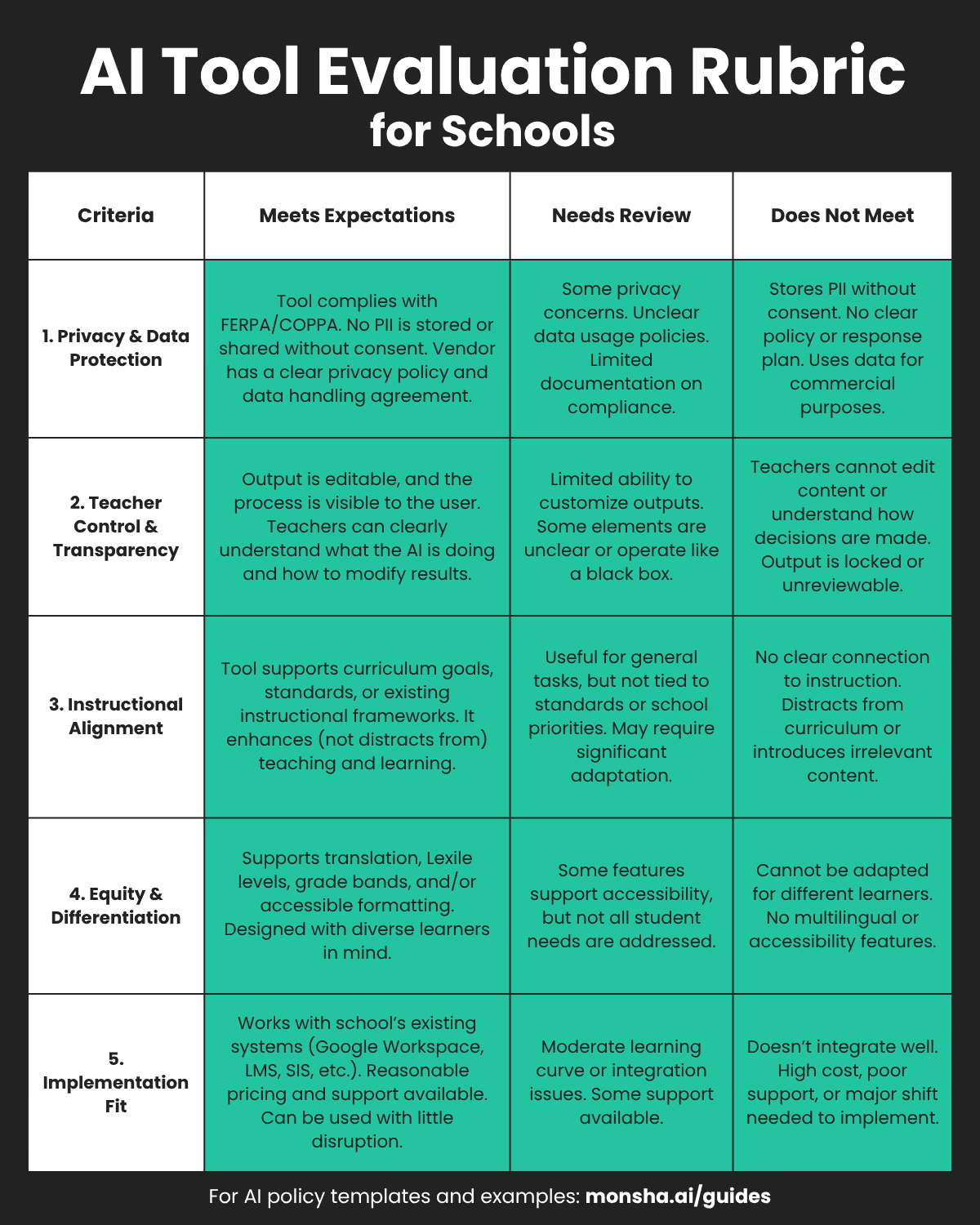Use this 5-point rubric to assess AI tools for classroom use based on privacy, instructional fit, and accessibility.
.avif)
As schools explore AI to support teaching and learning, the big question is: How do you decide which tools to approve? Not every AI tool is built with students in mind, and it’s easy to get overwhelmed by flashy features or vague promises.
To help school leaders, IT teams, and curriculum leads cut through the noise, we’ve created a practical AI Tool Evaluation Rubric you can download and start using right away.
This rubric is part of our full AI Policy Guide for Schools. You might also find our AI Tool Request Form and AI Use Decision Tree helpful as next steps.

It’s a 5-point rubric designed to help school teams evaluate whether an AI tool is safe, effective, and instructionally appropriate. The idea isn’t just to block tools, but to vet them in a way that supports innovation with guardrails.
Each tool should meet expectations in at least 4 out of 5 key categories to be approved.


You can download the rubric here: Download AI Tool Evaluation Rubric (Google Doc)
Pair this rubric with:
And for everything in one place, start with the AI Policy Guide for Schools.
Let’s make AI work for learning, not against it.
If you're interested in our pick, here are the five free AI tools teachers can use the most. Each one helps with a different part of planning, teaching, or creating resources.
We've also written details on how these AI tools compare in education and teaching workflow.

Q: Why do schools need a rubric to evaluate AI tools?
A rubric helps schools ensure that AI tools meet privacy, instructional, and accessibility standards before being used with students.
Q: What should an AI evaluation rubric include?
Look for criteria like data privacy, teacher control, instructional alignment, equity, and ease of implementation.
Q: Who should be involved in the evaluation process?
Ideally, a cross-functional team of teachers, IT, curriculum leaders, and administrators should evaluate new tools together.

AI for Teachers
We’re the Monsha Team—a group of educators, engineers, and designers building tools to help teachers combat burnout and get back to life.. Our blogs reflect real classroom needs, drawn from conversations with educators around the world and our own journey building Monsha.
Join thousands of educators who use Monsha to plan courses, design units, build lessons, and create classroom-ready materials faster. Monsha brings AI-powered curriculum planning and resource creation into a simple workflow for teachers and schools.
Get started for free